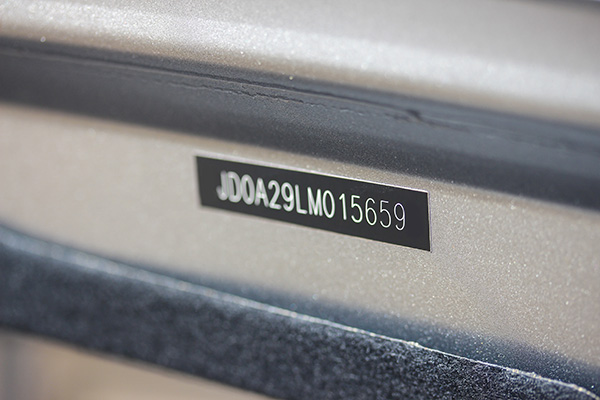
When you glance at your vehicle’s dashboard or open the driver’s door, you might notice a seemingly random string of 17 characters. This alphanumeric code is your Vehicle Identification Number or VIN. Far from being a meaningless jumble, the VIN holds a wealth of information about your car, including its origin, make and model, and even the plant where it was assembled. Understanding how to decode your VIN can provide insights into your vehicle’s history and ensure you get the right parts replacements.
What is a VIN and Why It Matters
The VIN is essentially your vehicle’s fingerprint. It is unique to every car and serves as a critical tool for identification, much like a Social Security Number does for individuals. Since the 1980s, automakers worldwide have adhered to the 17-character VIN standard, which means that no two vehicles manufactured after this period can share the same number. This standardization helps track vehicles across different regions over time, making it a powerful tool for a variety of purposes, from insurance claims to theft recovery.
Decoding the World Manufacturer Identifier (WMI)
The first three characters of your VIN make up the World Manufacturer Identifier (WMI). These characters reveal where your car was made and by which manufacturer. The first character indicates the country of origin, the second represents the manufacturer, and the third character often refers to the vehicle type or manufacturing division.
For example, a VIN that starts with "1HG" indicates a Honda vehicle assembled in the United States. Similarly, "J" as the first character would signify Japan, "W" would indicate Germany, and so on. The WMI is crucial for identifying the vehicle's origin and can be especially helpful when determining the authenticity of a used car’s history.
Understanding the Vehicle Descriptor Section (VDS)
Moving beyond the first three characters, the next six characters are known as the Vehicle Descriptor Section (VDS). This section details the vehicle model, body style, engine type, and other significant features. The VDS is essentially the blueprint of your car, giving insights into what makes your vehicle unique compared to others produced by the same manufacturer.
For instance, if your VIN contains a particular sequence in the VDS, it could indicate that your car is a sedan with a specific engine type. This level of detail is vital when ordering replacement parts or confirming the exact specifications of your vehicle for insurance purposes.
The Role of the Vehicle Identifier Section (VIS)
The final eight characters of your VIN form the Vehicle Identifier Section (VIS). This portion includes information about the vehicle’s model year, assembly plant, and unique production number. The 10th character in the VIN reveals the model year of the car, using a standardized set of letters and numbers. For example, the letter "A" might represent the 1980 model year, while the number "1" could indicate 2001.
The 11th character tells you where the vehicle was assembled, with each plant being assigned its own specific letter or number. The last six characters are the production serial number, making your vehicle one of a kind within that specific year and model.
Why Decoding Your VIN is Important
Knowing how to decode your VIN is more than just an interesting skill—it’s a necessity for any car owner. This knowledge empowers you to make informed decisions about your vehicle, whether you’re purchasing a used car, ordering specific parts, or verifying your vehicle’s history.
When buying a used car, decoding the VIN can alert you to potential red flags, such as discrepancies in the vehicle’s reported history. It can also help you avoid counterfeit parts when it’s time for repairs, ensuring that any replacement components match your car’s exact specifications. Moreover, understanding your VIN can assist in determining if your vehicle is subject to any recalls, allowing you to address safety issues promptly.
How to Locate and Read Your VIN
Locating your vehicle’s VIN is usually straightforward. The most common place to find it is on the dashboard, visible through the windshield on the driver's side. You can also find the VIN on the inside of the driver's side door frame and on the vehicle’s title, registration, and insurance documents. Once you’ve located the VIN, decoding it using the information provided above will allow you to understand your vehicle’s origins and specifications.
Need to verify the authenticity of your car parts? Use your VIN and visit Westside Car Care to ensure you’re getting the right fit for your vehicle. Schedule an appointment with us for personalized service!